Delivery

Delivery analysis using OnForm Multi-cam support
A recent feature of the OnForm video analysis platform is its support for multi-camera input. The individual devices have to be connected to the same WIFI network, but once paired a “master” device can control the recording of all of the auxiliary devices that are providing alternative camera views. In this brief article, I wish to document my equipment setup for delivery analysis. At this practice, I’m looking at two things: slide leg position, and arm extension during the release motion, that are difficult to analyze when standing either directly in front of, or behind, the athlete. Delivery Analysis Setup For delivery analysis, I use a Ryobi steel mitre sawhorse with collapsible legs, with an iPhone mount, in landscape mode, mounted in its centre. A green light laser, positioned on the far tee line, points to the hack, forming the line of delivery (LOD). The plumb line – actually just a red hockey skate shoelace with a carabiner as a
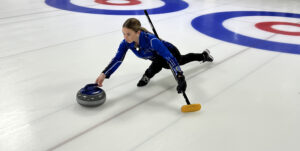
Toe-slide versus flat-foot slide: what is better for the athlete?
Perhaps there is no other sport that causes unilateral, repetitive strain injuries more than curling. A 2004 study of competitive players competing in two USA National events found a high incidence of back, knee, hip, wrist, and shoulder injuries amongst competitors of both genders: Sweeping the stone (55%) and delivering the stone (50%) were the skills most provocative of symptoms (fig 2A–C). Collectively, symptoms of knee (54%), back (33%), and shoulder pain (20%) were most prevalent (table 2). Knee pain was most often reported in the ‘‘tuck’’ knee, which is typically flexed well beyond 90˚ during stone delivery. Sixty-two per cent of those with knee pain were symptomatic in their tuck [slide foot] knee, while 31% complained of bilateral discomfort. Reeser and Berg, September 2004 Our intent in writing this article was two-fold: one, to make other coaches aware of the prevalence of anterior knee pain in youth curling, particularly with young women, and two, to recommend that athletes who
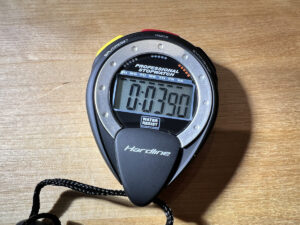
Ten reasons why an interval time might be inaccurate
This article is joint work with John Newhook of Dalhousie University in Halifax. Using interval, or “split” times, can benefit the delivering team because an interval time provides a proxy measurement for the velocity of the stone at release. With an interval time, the two brushers can utilize the time to assist with their weight judgement, and the delivering player can use a split time to assist their delivery with respect to weight control. However, relying on splits – either back-line to near hog line or, less commonly, tee-line to near hog line – can be complicated. One complication is that, to be more effective, the team must map split times into other timing systems, such as hog-to-hog times or hog-to-far tee-line times if they are to utilize the throws of the opposition team to help judge the speed of the ice. But the mapping of split times is by far not the only complication in their use. In this
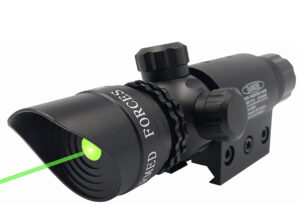
Using lasers in curling – an update
In the five years since John Newhook and I drafted this document describing the use of lasers in curling the technology has continued to improve and become more affordable, so it seemed like an update was in order. With many curling clubs moving to LED lighting for their arenas, green light lasers have now become the norm, rather than the exception, and their cost has plummeted. The lasers that I use (see below) can now be purchased from Amazon for a mere $38.69 Canadian, a significant drop from five years ago. Even a rechargeable, green laser pointer for presentations can be had for only $16, a long way from the nearly $200 I spent on a red laser pointer when I was in graduate school at the University of Manitoba. Of course, none of the lasers for sale anywhere are intended for curling, and the majority are intended for one of three use cases: for use with a firearm, usually
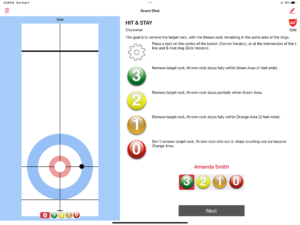
Curling Canada’s Singles App
Curling Canada’s Singles app, a free application for both Apple and Android devices, permits an athlete or a coach to evaluate their shot-making skills and record and review results through a season. In addition, athlete and team scores can be compared to other athletes across Canada. In my experience, the existence of the Singles app is unknown to many coaches, especially U15 or U18 coaches who are new to coaching; hence this article. The Singles application leads an athlete or coach through specific shots whose number and level of difficulty are pre-determined by the age range(s) of the athletes: U15, U18, U21, or U25+. The application supports two distinct operational phases: competition and practice. For competition, the athletes “compete” through a series of shots with the thrower accumulating points for shots made (one or two of their teammates brush, and another holds the broom). Shot-making points are accumulated through the exercise and the athlete with the highest number of points
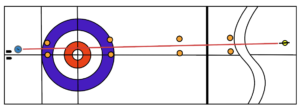
Some thoughts on practice for student-athletes
To achieve sufficient skill as a competitive student-athlete, coaches will often recommend or insist that athletes spend a certain amount of time practicing on their own. Sometimes this practice will be done with a partner, perhaps even with the entire team, or sometimes the student-athlete may prefer to work on their own. The point here is that the practice is self-directed – it’s not undertaken with the supervision of a coach. So what should this practice look like? I think that many student-athletes have actually little idea about what a self-directed practice should entail. When I’m at my local club I frequently see the following: If the practice involves multiple teammates there is often far too much unproductive chit-chat. Sometimes those conversations can be helpful, say to address a team dynamics issue, but far too often I will overhear conversations that would better be held off the ice, rather than use expensive ice-time. If you feel somewhat guilty reading this,